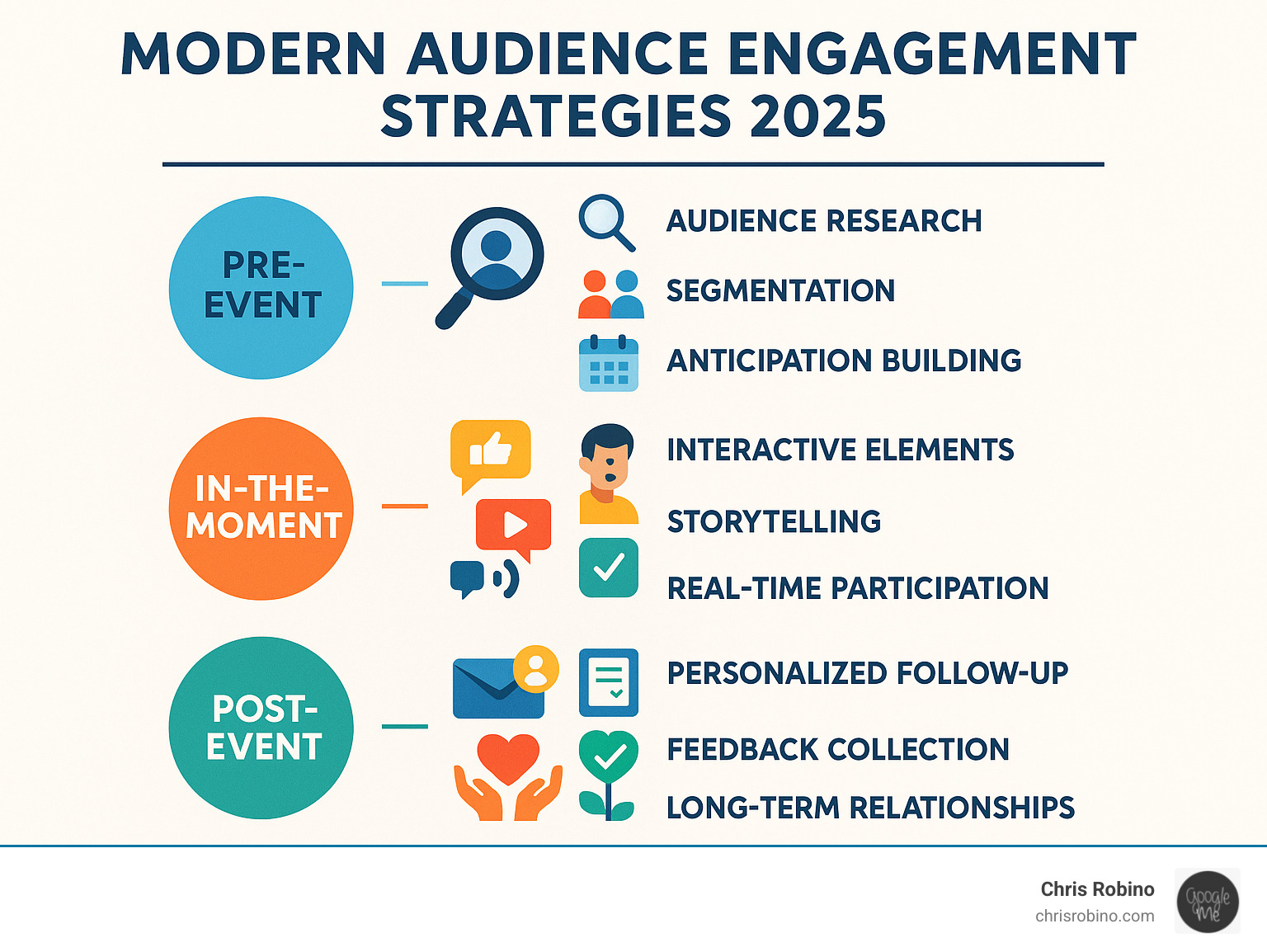Enterprise SEO: Strategies That Perform at Scale
Large companies win in search by architecting systems, not one-off campaigns. At enterprise scale, SEO is less about isolated keywords and more about building durable, cross-functional capabilities that improve discoverability, relevance, and conversion across millions of URLs, hundreds of teams, and constant product changes. The payoff compounds: each improvement to your information architecture, templates, or internal linking benefits thousands of pages at once, while governance ensures quality and compliance as you move fast.
What separates enterprise SEO from small-site optimization is the operating model. You need playbooks, release gates, and shared metrics so product, engineering, content, design, and analytics make search-friendly decisions by default. You also need a data foundation that surfaces the biggest opportunities by intent and category, and a content engine that turns those opportunities into high-quality, on-brand experiences across markets and languages.
Done well, enterprise SEO delivers:
- Scalable, cost-efficient growth with lower blended customer acquisition costs over time
- Compounding advantages via reusable templates and components that ship safely and repeatedly
- A defensible moat as your site becomes the most comprehensive, authoritative, and technically sound resource in your category
I’m Chris Robino. For over two decades I’ve helped large organizations build AI-assisted, data-backed systems that turn complex sites into search-first experiences. Below is a concise, enterprise-ready approach to SEO that creates measurable, compounding impact.

A Framework for Enterprise SEO That Scales
Enterprise SEO is a system with three phases that repeat and mature over time: Foundation, Activation, and Acceleration. Each phase builds capabilities that increase your surface area in search while protecting technical integrity and brand quality.
Phase 1: Foundation — Governance, Architecture, and Data
Governance and Operating Model
- Establish a central SEO Center of Excellence (COE) that sets standards, audits, and supports business units.
- Define ownership and SLAs across product, engineering, content, and legal for common SEO workflows (new templates, redirects, schema updates, international launches).
- Create pre-release checklists and release gates so SEO is validated alongside accessibility and performance.
Technical Baseline
- Crawlability and Indexation: Ensure clean robots directives, robust XML sitemaps, and correct canonicalization. Deindex thin/duplicative variants and manage faceted navigation to prevent index bloat.
- Information Architecture: Build clear, hierarchical URL and navigation structures that map to how customers search (category > subcategory > detail). Add breadcrumbs and consistent internal linking.
- Performance and Rendering: Optimize Core Web Vitals and ensure both server-side and client-side rendered content is reliably discoverable. Use hydration strategies that do not hide primary content from crawlers.
- Structured Data: Implement schema at the template level (Product, FAQ, Article, HowTo, Organization, Breadcrumb) to qualify for enhanced SERP features.
- Internationalization: Use regionalized URLs, correct hreflang, and localized metadata. Avoid auto-translation without human review on conversion-critical content.
Data and Measurement
- Standardize a keyword taxonomy by intent, category, and stage (informational, navigational, transactional, post-purchase).
- Build dashboards that track non-brand organic traffic, revenue/leads, share of voice, crawl health, index coverage, and Core Web Vitals. Segment by category and country to surface where changes will move the needle.
Phase 2: Activation — Content, Templates, and SERP Coverage
Keyword Universe and Topic Architecture
- Map your category’s search demand into clusters: products/services, comparisons, problems/solutions, how-tos, pricing, and support queries.
- Build pillar pages and hub-and-spoke clusters that align to those intents. Ensure every cluster has a logical internal linking map that routes authority from hubs to spokes and back.
Templates and Programmatic SEO
- Identify page types you can scale with templates (product detail, category, location, profile, FAQ, support). Codify on-page elements (H1, meta, schema, internal links) at the template level so improvements roll out to thousands of URLs safely.
- Use structured data and content components that can be localized and personalized. Apply QA rules to prevent duplicate titles/descriptions and ensure canonical consistency.
High-Quality Content at Scale
- Pair subject-matter expertise with editorial standards so pages satisfy intent with clarity and depth. Add original insights, data, and visuals rather than aggregating what already exists.
- Use AI to accelerate research, outlines, and variant generation, while maintaining human review for accuracy, brand voice, and compliance.
On-Page Optimization and Internal Linking
- Craft titles and H1s that reflect the primary intent and include entities users expect. Write meta descriptions that improve click-through rate by summarizing value and next steps.
- Build contextual internal links from high-authority sections to priority pages, and from editorial content into commercial pages using descriptive anchors.
SERP Feature Strategy
- Optimize for featured snippets with concise, structured answers near the top of relevant pages.
- Use FAQ and HowTo patterns where appropriate, and include high-quality images and video to expand visibility across SERP surfaces (image packs, video carousels).
- For eCommerce, ensure product schema, availability, ratings, and pricing are accurate and refreshed. For local entities, maintain consistent NAP data and rich location pages.
Off-Page Signals and Digital PR
- Pursue brand-building initiatives that earn high-quality mentions and links from relevant publications and partners. Reclaim unlinked brand mentions and fix broken citations.
- Avoid tactics that create risk (spammy links, doorway pages, spun content). Enterprise SEO compounds best with quality and consistency.
Search UX and Conversion
- Align site search and SEO: pages should reflect the queries users type internally and externally. Address zero-results queries with content or navigation updates.
- Treat UX patterns—filters, comparisons, sizing, compatibility—as ranking factors by proxy. Pages that resolve intent clearly earn better engagement and, over time, better visibility.
Phase 3: Acceleration — Automation, Experimentation, and Expansion
Automation and Tooling
- Create content and schema components that can be deployed across templates via your design system. Automate sitemap generation, internal link modules, and media optimization.
- Use AI to detect content decay, identify consolidation candidates, and surface entity gaps. Maintain a human-in-the-loop process for changes that affect brand or compliance.
Experimentation and Risk Management
- Run SEO A/B tests at the template or block level to quantify uplift from titles, content modules, schema, and layout changes. Use canary releases and holdouts to reduce risk during migrations.
- Maintain a rollback plan and redirection playbook for replatforming, domain merges, and information architecture changes.
International and New Surfaces
- Localize intent, not just language. Rebuild keyword mapping per market; adjust information architecture and on-page content to match regional needs and regulations.
- Expand to additional search surfaces where relevant (images, video, news, local, app listings), using the same governance standards to protect quality.
Adapting Enterprise SEO to Different Business Models
| Focus Area | eCommerce | SaaS/Enterprise | Marketplace/Platform | Media/Publishing |
|---|---|---|---|---|
| Templates at Scale | Product, Category, Comparison | Feature, Solution, Industry, Pricing | Listing, Profile, Category | Topic hubs, Articles, Evergreen guides |
| Critical Schema | Product, FAQ, Review, Breadcrumb | Organization, FAQ, HowTo, Breadcrumb | Organization, Product/Service, Review | Article, News, FAQ, Breadcrumb |
| Conversion Patterns | Trust, availability, price, reviews | Demo/trial CTAs, case studies, ROI content | Supply quality signals, trust & safety | Related content, newsletter, community |
| Risk Hotspots | Faceted nav, variants, index bloat | Gated content, JS rendering, migration | Duplicate listings, thin pages | Duplicate topics, thin syndication |
The outcome of this framework is a durable, self-improving search program: every release teaches you something, every lesson becomes a rule, and every rule protects and scales the next wave of growth.
Solving Enterprise SEO Problems and Measuring What Matters
Even the best plans encounter friction. At scale, small issues multiply quickly, so prioritize prevention, rapid detection, and fast, reversible fixes.
Common Enterprise SEO Problems and How to Fix Them
Index Bloat and Crawl Waste
- Cause: Uncontrolled parameters, faceted navigation, duplicates, paginated variants.
- Fix: Enforce canonicalization at the template level, use noindex for non-valuable variants, and restrict crawling of non-critical parameters. Ensure sitemaps only include canonical, indexable URLs.
Duplicate and Near-Duplicate Content
- Cause: Template reuse without unique value, thin localization, overlapping hubs.
- Fix: Consolidate or redirect to a single canonical page. Elevate unique, market-specific content and remove boilerplate that adds no value.
Rendering and Content Visibility
- Cause: Client-side rendering that delays or hides primary content; scripts blocking resources.
- Fix: Prefer server-side rendering or hybrid approaches for critical content. Ensure important HTML is available without user interaction and that resources are fetchable.
Performance and Core Web Vitals
- Cause: Oversized media, render-blocking resources, third-party tags.
- Fix: Adopt performance budgets, compress and lazy-load media, optimize fonts, reduce JS payloads, and monitor Largest Contentful Paint, Cumulative Layout Shift, and Interaction to Next Paint.
International SEO Errors
- Cause: Incorrect hreflang, mixed regional content, auto-redirects.
- Fix: Implement reciprocal hreflang, keep language-region pages distinct, and let users switch locales without forced redirects.
Migrations and Replatforming
- Cause: URL changes without mapping, delayed redirects, lost metadata.
- Fix: Build a redirection matrix, preserve internal links and schema, ship redirects at launch, monitor logs and error rates, and stage changes with canary releases.
AI Content Risk and Brand Safety
- Cause: Over-automation without review creates inaccuracies and policy issues.
- Fix: Require human edit for expert claims, citations for data, and automated QA checks for duplication, claims, and compliance.
Measuring Success: Enterprise KPIs and Feedback Loops
North-Star Outcomes
- Non-brand organic revenue or sales-qualified pipeline
- Share of voice across priority categories and intents
- Blended CAC and payback period improvements attributed to organic
Leading Indicators
- Impressions and clicks by intent cluster (informational, commercial, support)
- CTR improvement from title/meta tests and SERP feature wins (snippets, FAQs, video)
- Position distribution shifts (top 3, 4–10, 11–20) at the cluster level
Technical and Content Health
- Crawl stats versus canonical URL count; index coverage accuracy
- Core Web Vitals pass rate by template and country
- Render success of critical content; media optimization health
- Publish velocity, time-to-index, and content decay/refresh rate
Experimentation and Risk Signals
- Template-level SEO test results with confidence intervals
- 404/5xx spikes, redirect loops, sitemap freshness, and unexpected traffic drops
- Canonical conflicts, hreflang errors, and parameter creep alerts
Attribution and Insight
- Connect organic sessions to assisted and last-touch revenue, lead quality, and retention where applicable.
- Run periodic content consolidation and pruning to protect quality signals and focus authority on pages that earn outcomes.
Above all, create a continuous improvement loop: instrument changes, analyze impact, and promote the winners to your standards. The flywheel is simple—governance prevents avoidable mistakes, templates scale what works, and measurement keeps the system honest. Over time, this transforms search from a channel into a competitive advantage that compounds with every release.


